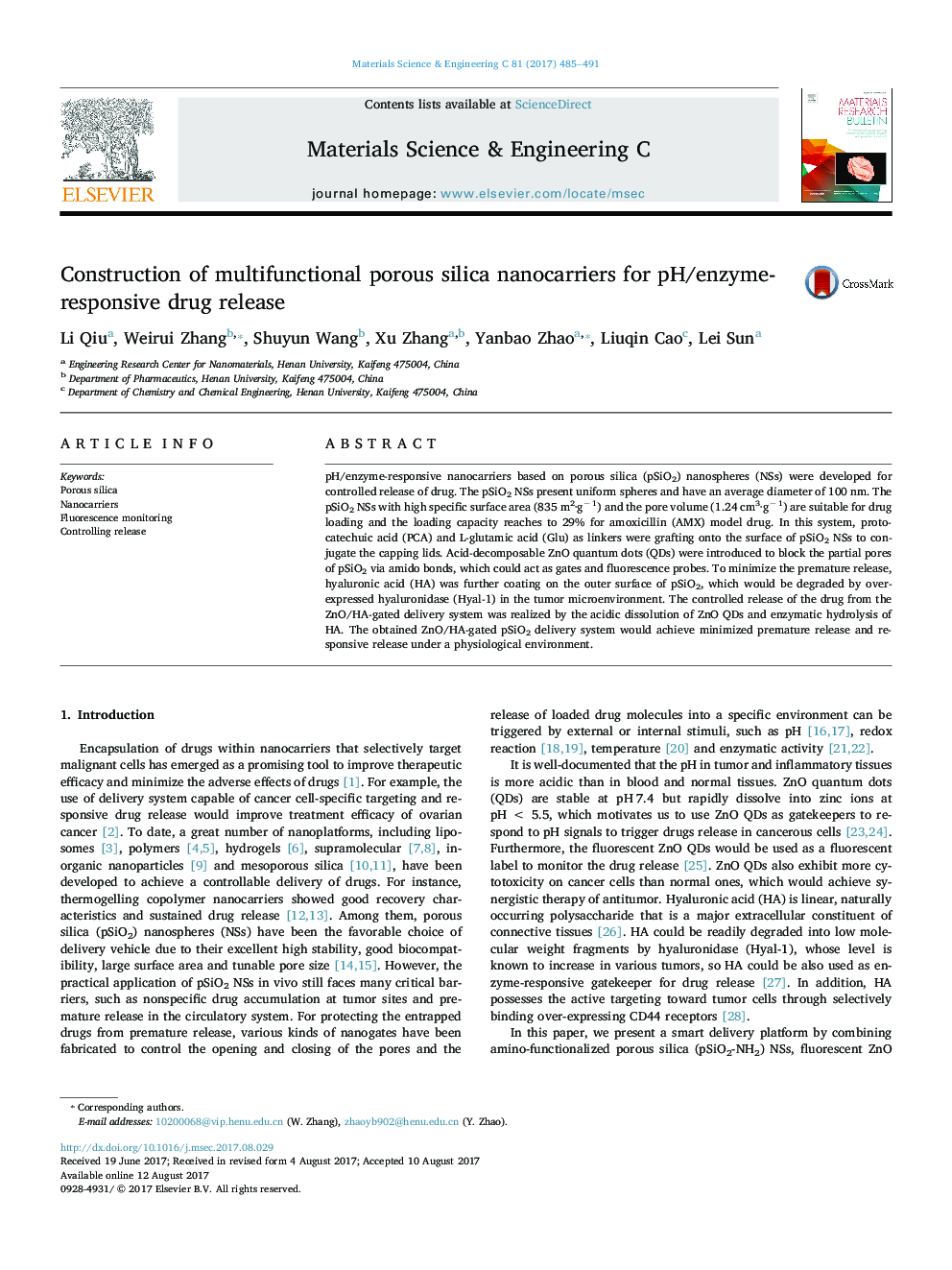| Article ID | Journal | Published Year | Pages | File Type |
|---|---|---|---|---|
| 5434263 | Materials Science and Engineering: C | 2017 | 7 Pages |
â¢Multifunctional porous silica (pSiO2) nanocarriers were designed and prepared.â¢The pSiO2 nanocarriers have large specific surface area and high drug loading capacity.â¢ZnO QDs and hyaluronic acid are used to double seal the loaded drug molecules.â¢The nanocarriers display minimal premature release and pH/enzyme responsive release.â¢The fluorescent ZnO QDs could be used to monitor the drug release.
pH/enzyme-responsive nanocarriers based on porous silica (pSiO2) nanospheres (NSs) were developed for controlled release of drug. The pSiO2 NSs present uniform spheres and have an average diameter of 100 nm. The pSiO2 NSs with high specific surface area (835 m2·gâ 1) and the pore volume (1.24 cm3·gâ 1) are suitable for drug loading and the loading capacity reaches to 29% for amoxicillin (AMX) model drug. In this system, protocatechuic acid (PCA) and L-glutamic acid (Glu) as linkers were grafting onto the surface of pSiO2 NSs to conjugate the capping lids. Acid-decomposable ZnO quantum dots (QDs) were introduced to block the partial pores of pSiO2 via amido bonds, which could act as gates and fluorescence probes. To minimize the premature release, hyaluronic acid (HA) was further coating on the outer surface of pSiO2, which would be degraded by over-expressed hyaluronidase (Hyal-1) in the tumor microenvironment. The controlled release of the drug from the ZnO/HA-gated delivery system was realized by the acidic dissolution of ZnO QDs and enzymatic hydrolysis of HA. The obtained ZnO/HA-gated pSiO2 delivery system would achieve minimized premature release and responsive release under a physiological environment.
